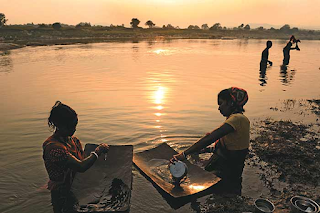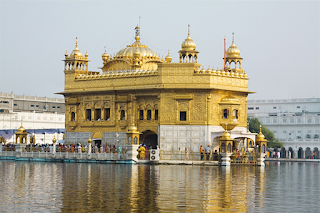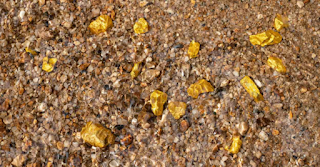Como evitar que o ouro fino flutue para fora da bateia
A maioria dos garimpeiros sabe que o ouro é pesado.
Na verdade, quase sempre é o elemento mais pesado que você pode recuperar dentro de um rio com gravidade específica de 19,3.
É consideravelmente mais alto do que areia, pedras, cascalho, quartzo, chumbo, ferro e outros elementos comumente encontrados em um rio.
Na imagem a seguir esta um exemplo do ouro fino flutuando na bateia.
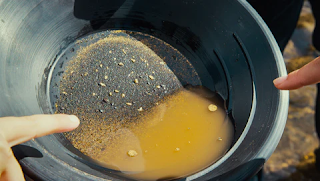 |
| Ouro fino flutuando na bateia |
Então, por que diabos o ouro flutuaria?
Bem, tem a ver com a tensão superficial na superfície da água e os pequenos tamanhos das partículas de ouro.
A tensão superficial é um fenômeno natural, mas não é bom para o garimpeiro.
Isso não é um problema com grandes pepitas de ouro ou até mesmo flocos de ouro menores, mas para as pequenas partículas de pó de ouro podem realmente flutuar em cima da água.
Claro que isso resulta em perdas.
Em vez de ficar preso atrás dos rifles das bateias ou das sluice box, o ouro sai direto da bandeja e volta para o rio.
Atenção que estas perdas não se verificam em mesas vibratórias, onde há a recolha do ouro fino.
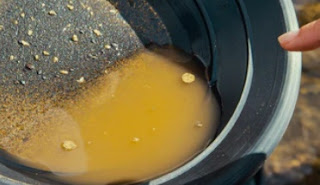 |
| O fenômeno da tenção superficial no ouro fino. |
Felizmente a solução para o pó de ouro que flutua na bateia é muito mais simples do que pensa.
O que você precisa é de algum tipo de surfactante (substância que aumenta as propriedades lubrificadoras de um líquido baixando a tensão superficial deste) que quebre a tensão superficial da água.

As melhores e mais baratas opções são duas coisas que você provavelmente já tem em casa: sabão de lavar louça ou Jet-dry que é um acabamento e abrilhantador, enxágue para máquinas de lava-louças e agente de secagem.
Ao adicionar apenas algumas gotas à água na bateia de ouro, essas minúsculas partículas de ouro terão muito menos probabilidade de flutuar na superfície da água.
Não se empolgue demais com isso. Você só precisa de algumas gotas. Se a água estiver com sabão, pode causar mais problemas do que ajuda.

Apenas algumas gotas de jet-dry é tudo o que você realmente precisa.
Você deve adicionar toda vez que procura ouro?
Isso é mais importante durante a limpeza final, quando é mais provável que haja ouro fino na bateia. Você pode adicioná-lo à sua bateia sempre que quiser, mas a maioria dos garimpeiros só adiciona um surfactante quando a probabilidade de perdas é maior.
Em lugares onde o ouro é sempre de textura fina, como os depósitos de ouro glacial, pode ser mais importante.
Esta dica útil ajudará você a adicionar mais ouro à sua coleção.
Já quanto ao uso do WD-40 não encontrei nenhum estudo ou testes sobre ele na bateia, uma vez que a fórmula do WD-40 apresenta uma baixa tensão superficial.
Queimar bateia para garimpar ouro:
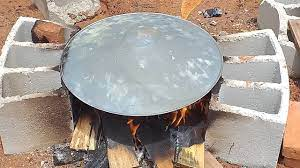
Se comprar uma bateia de ferro ou se fizer uma caseira o ideal é passar ela pelo processo de "queimar a bateia" que nada mais é do que queimar como diz o nome, ou seja, passar a bateia de ferro no fogo ou na brasa para que as gorduras ou os óleos nela impregnado possam sair, queimando-os.
Pesquisa por vídeos no YouTube para saber mais sobre isto e o porque.
No geral, bateias caseiras tem um problema, a cor.
Sim, a cor de uma bateia é um diferencial e tanto na hora de garimpar ouro, principalmente o ouro fino.
Já reparou que a maioria das bateias de plasticos vendidas são nas cores verde, azul ou preta?
Isto é para melhor visualizar o "amarelo" do ouro evitando perdas desnecessárias de ouro fino.
"esperaí oficina70"...
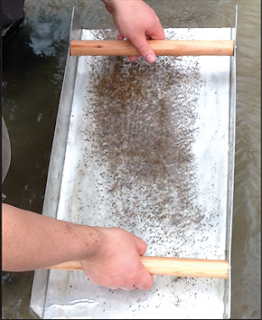
...mas e aquele artigo onde você fala sobre pegar diamantes e ...ouro... com vaselina e graxa?
Bom, o artigo é o do link a seguir...
...onde o ouro é retido de modo diferente usando massa consistente com baixa tensão superficial.
Sobre o extrato de pau-de-balsa
Como recuperar o ouro fino no garimpo sem usar mercúrio:
Saiba como garimpar ouro usando uma bateia:
Quer saber mais sobre o garimpo de ouro e como achar ouro:
Fontes:

